- Home
- Clive Cussler
Black Wind dp-18 Page 2
Black Wind dp-18 Read online
Page 2
Gradually, the winds began to ease and the seas flattened. Ogawa was pleased to find his vessel had survived Mother Nature's buffeting with no damage. The battered crew regained their sea legs and their fighting morale as the seas stabilized and the submarine neared the enemy's homeland.
“Captain, I have a final plot to the coast,” Seiji Kakishita remarked as he unrolled a chart of the northeast Pacific Ocean in front of Ogawa. The I-403's navigator had ceased shaving, like many crewmen upon leaving port, and sported a straggly tuft of hair from his chin that created a cartoonish look about him.
“What is our present position?” Ogawa inquired as he studied the map.
“Right here,” Kakishita replied as he pointed to a spot on the map with a pair of dividers. “Approximately two hundred kilometers west of Vancouver Island. We have two more hours of darkness for surface running, which will bring us to within 150 kilometers of land by daybreak on our current heading.”
Ogawa studied the chart intently for a few moments before speaking. “We are too far north. I wish to launch the attack from a point central to the four targets in order to minimize flight time. Bring us south and we'll approach the coastline here,” he said, stubbing his finger at the map. Beneath his fingertip lay the northwest tip of Washington State, an angular peak of land that jutted into the Pacific Ocean like the snout of a hungry dog. Just to the north lay the Strait of Juan de Fuca, which created a natural border channel with British Columbia and was the main thoroughfare for maritime traffic from Vancouver and Seattle into the Pacific Ocean.
Kakishita hurriedly plotted a new route on the map and recalculated the distances. “Sir, I compute that we can arrive at a position fifteen kilometers offshore from the point marked ”Cape Alava' in twenty-two hours."
“Excellent, Kakishita,” Ogawa replied smugly as he eyed a nearby chronograph. “That will allow us plenty of time to commence the attack before dawn.” The timing was right. Ogawa wished to spend as little time as possible in high-traffic areas where they might be spotted before launching the strike. Things seemed to be falling into place, he thought. With a little luck, they might just be on their way home from a successful mission in just over twenty-four hours.
A buzz of activity overtook the I-403 after it surfaced again that evening as preparations were made to launch the aerial strike. Mechanics pulled out the fuselage, wings, and pontoons of the aircraft and began piecing the parts together like some giant toy model. Seamen rigged the hydraulic catapult and carefully tested the device by which the planes would be launched. The pilots attentively studied topographic maps of the region, plotting their course to the drop zones and back. And the ordnance men, under the cautious direction of Dr. Tanaka, configured the bomb racks of the Seiran bombers to hold the twelve silver canisters still stored in the forward torpedo room.
By three in the morning, the I-403 had crept quietly to its staging point off the Washington coast. A light drizzle was falling and the six lookouts Ogawa had stationed on deck strained to peer through the murky darkness for signs of other vessels. Ogawa himself paced the open bridge nervously in anxious wait to see the aircraft off, so that he could hide his submarine under the protection of the rolling seas.
Another hour had ticked by when a hurried squat man in a grease-stained jumpsuit approached Ogawa tentatively.
“Sir, sorry to report we are having troubles with the aircraft.”
“What is the problem at this late hour?” Ogawa countered, clearly annoyed.
“Aircraft number one has been found to have a faulty magneto. We must replace it with a spare for the motor to operate. Aircraft number two has a damaged elevator, apparently due to shifting that occurred during the storm. This we can repair also.”
“And how long will it require to complete both repairs?”
The mechanic looked skyward for a moment, contemplating his response. “Approximately one hour for the repairs, sir, plus another twenty minutes to load the ordnance from belowdecks.”
Ogawa nodded grimly. “Proceed with all haste.”
One hour turned into two and still the planes were not ready. Ogawa's impatience grew as he noticed gray streaks in the eastern sky, signaling the approaching dawn. The drizzling rain had stopped and was replaced by a light fog that enveloped the sub, cutting visibility to less than a third of a mile. Sitting ducks, perhaps, but at least ducks in a blind, Ogawa thought.
Then the stillness of the morning air was shattered as a cry from the sound-detection operator belowdecks pierced the air.
“Captain, I have an echo!”
“I've got you this time, Big Brother!” Steve Schauer yelled into the radio transmitter with a grin, then pushed a pair of throttles to their stops. Alongside him in the fishing trawler's cramped cabin, two teenage crewmen, exhausted and reeking of dead fish, looked at each other and rolled their eyes. Schauer ignored their looks as he lightly fingered the wooden wheel of the plodding fishing boat and began whistling an old drinking tune.
A pair of fortyish siblings with youth in their veins, Steve and Doug Schauer had spent their lives fishing the waters in and around Puget Sound. With skill and hard work, they had thrown all their earnings into ever-larger fishing boats until they traded up for a matched pair of fifty-foot wooden hull trawlers. Working as a team, they successfully fished the Washington and Vancouver shorelines with an uncanny ability to sniff out large schools of halibut. After a three-day excursion, with their holds full of fish and their coolers empty of beer, the brothers would race each other back to port like a pair of kids on roller skates.
“It ain't over till the paint scratches the dock,” Doug's voice crackled over the radio. After a particularly good haul during the 1941 season, the brothers had splurged on two-way radios for their boats. Though intended to help each other coordinate the catches, the brothers spent most of their time on the airwaves goading each other instead.
As Schauer's boat chugged along at its top speed of 12 knots, the skies lightened from black to gray and a spotlight beam shining on the water ahead of the bow gradually lost its illuminating effect. Ahead, in the mist, Schauer saw the faint outline of a large black object lying low in the water. A second later, a small orange flash emanated from the object's center for a brief instant.
“Is that a whale off the starboard bow?” The words had barely escaped his lips when a shrieking whistle creased past the cabin, followed by a volcanic explosion that erupted in the water off the port beam, showering the trawler in a downpour of seawater.
Schauer stood stunned for a moment, his mind unable to comprehend what his eyes and ears had just absorbed. It took the sight of a second orange flash to jolt him into action.
“Get down!” he shouted at the two men in the cabin as he spun the ship's wheel hard to port. The laden trawler was slow to respond, but it was enough to avoid the second shell from the I-403's 5.5-inch deck gun, which screamed into the water just astern of the boat. This time, the force of the explosion lifted the entire trawler out of the water and slammed it back down again hard, shearing the rudder off in the upheaval.
Wiping blood out of his eyes from a gash to the temple, Schauer groped for the radio microphone.
“Doug, there's a Jap sub. It's blasting the hell out of us. No joke. Keep to the north, and get help.”
He was still talking when the third shell found its mark, piercing the forward hold of the fishing boat before detonating. A furious explosion of splinters, glass, and mangled halibut blasted into the cabin, throwing the three men viciously to the back wall. Struggling to his feet, Schauer peered out a gaping hole in the front of the cabin and saw the entire bow of the trawler disintegrate into the sea before him. Instinctively grabbing the wheel for support, he looked on in disbelief as the remains of the boat began to sink rapidly beneath his feet.
Peering through binoculars, Ogawa watched with grim satisfaction as the trawler slipped beneath the waves amid a scattering of flotsam. Rescuing survivors was out of the question, so he wasted no ti
me in looking for bodies in the water.
“Motoshita, have there been any additional sound recordings?” he asked his exec.
“Negative, sir. The sound operator reported a possible secondary target before we initiated firing but the reading faded. It was either background noise, or a small vessel at best.”
“Have him keep sweeping. With this visibility, we will hear a vessel well before seeing her. And have the chief aircraft mechanic report to me. We've got to get those planes launched.”
As Motoshita scurried off, Ogawa stared toward the hidden coastline of Washington. Perhaps we'll get lucky, he thought. The trawler was likely a lone fishing boat and wouldn't have a radio. The guns could have been heard ashore, but, at this distance, would sound like an innocuous muffle. The charts showed few inhabitants residing along that stretch of coast as well. Perhaps-just perhaps-they could still pull off the mission undetected.
The hairs on the back of Radioman First Class Gene Hampton's neck stood up like a grove of ponderosa pine. The voice ringing through his earphones had an air of urgency and authenticity that could not help but be believed. After confirming the message twice, Hampton popped out of his chair like a jack-in-the-box and bounded to the center of the bridge.
“Captain, I just picked up a civilian Mayday message,” he blurted excitedly. “A fisherman says there's a Jap sub offshore shelling his brother's boat.”
“Did he sound coherent?” replied the ship's bearded, heavyset commander in a skeptical tone.
“Yes, sir. Said he didn't see the sub because of the fog but got a radio call from his brother on another fishing boat. He heard a couple of shots fired from a big gun, then lost contact with his brother. I received a call from another boat confirming the sound of gunfire.”
“Did they provide a fix on the location?”
“Yes, sir. Nine miles southwest of Cape Flattery.”
“Very well. Contact the Madison and tell her we are headed out of the strait to investigate a reported enemy contact, then provide a location fix to Navigation. Mr. Baker,” he continued, turning to a tall lieutenant standing at his side, “let's go to General Quarters.”
As an alarm bell rang throughout the ship, the crew of the USS Theodore Knight scrambled to their battle stations, adorning helmets and kapoks as they ran. It wasn't the first time the Farragut-class destroyer had seen action. Launched in 1931 at the Bath Iron Works shipyard in Maine, the Theodore Knight had an active service duty garnering North Atlantic convoy duty in the early stages of the war. After dodging several U-boat attacks while escorting the merchant fleets, the 341-foot-long destroyer was sent back for patrol and escort duty off the West Coast, sailing the waters from San Diego to Alaska.
Trailing three miles behind, in the Strait of Juan de Fuca, was the Liberty Ship Madison, bound for San Francisco with a cargo of lumber and tinned salmon. Leaving the assigned cargo ship in its wake, the Theodore Knight broached the mouth of the Pacific as its captain, Lieutenant Commander Roy Baxter, ordered flank speed. The ship's twin diesel turbines churned the sleek gray ship through the water like a hound chasing a rabbit. The crew, accustomed to quiet, routine patrols, was at an unusually heightened sense of readiness at the prospect of facing the enemy.
Even Baxter felt his heart beat a little faster. A twenty-year Navy man, he had seen action in the Atlantic but had grown bored with his recent assignment on the home shores. He relished the thought of tasting battle again, though remained skeptical about the radio report. Japanese subs had not been seen off the coast for over a year, he knew, and the Imperial Navy was now clearly on the defensive. “Radar?” he demanded loudly.
“Sir, I have three small vessels approaching the channel, two from the north and one from the west,” replied the radarman without taking his eyes off his monitor. “I have another indefinite target that appears to be stationary lying to the southwest.”
“Take us to the southern mark,” Baxter barked. “And have the forward batteries stand by for action.” The commander had to suppress a grin of excitement as he issued the orders. Maybe we'll earn our pay today, he thought while strapping on his helmet.
Unlike their American counterparts, most Japanese submarines in World War II were not equipped with radar. The early-warning technology was only first deployed on Imperial submarines in mid-1944, and then installed only on selected vessels. Most Japanese submarines instead relied upon sound-detection equipment to reveal a distant enemy. Although more limited in range than radar, sound detection could be utilized underwater, and aided many a sub in avoiding a fatal rendezvous with depth charges.
Absent a radar unit, it was the I-403^ sound operator who first became aware of the destroyer bearing down on them.
“Vessel approaching ahead ... sound intensity one,” he reported at the first registering on his equipment.
On deck, both of the aircraft had been moved out of their hangars, where the wings and pontoons were affixed, while repairs continued. It was the situation Ogawa feared most. With both planes assembled but neither ready for flight, they would have to be sacrificed should the submarine have to make an emergency dive.
“Deck gun at the ready,” he ordered, hoping the unwelcome intruder was yet another fishing boat.
“Sound intensity two and increasing,” the sound operator relayed calmly. “It's a ship,” he added, to no one's surprise.
“Secure all aircraft and clear the aviation deck,” Ogawa ordered an ensign, who sprinted down the large deck shouting at the mechanics and pilots as he ran. Tying down the two airplanes, the aviation crew quickly grabbed their work tools and scurried to the hangar. The watertight doors of the hangar were closed and sealed; then the men dropped down another hatch into the secure body of the submarine.
“Sound intensity three, off our bow. May be a destroyer,” the operator reported, correctly identifying the churning sound of the tin can's twin propellers.
As if on cue, the gray ship materialized out of the fog a half mile away, the apparition of a steel wraith charging across the moor. White foam burst off the bow in angry torrents while wisps of dark smoke billowed from the funnel. The lean ship drove straight at the sub, an attacking lancer not to be denied.
In an instant, the I-403's deck gun boomed as the submarine's experienced gun crew attempted to halt the oncoming dervish. The slim, head-on profile of the destroyer made for a difficult target, however, and the shell passed harmlessly to one side. Hurriedly, the gun crew took aim and fired again.
Once identifying the ship as a destroyer, Ogawa recognized the futility of a surface duel with a superior vessel and immediately ordered a crash dive. The mission would have to be sacrificed for the safety of the ship and crew, he reasoned, if it wasn't already too late.
As the dive alarm sounded, the gun crew fired off a last desperate shot before scrambling belowdecks to safety. The gunner's accuracy was nearly dead-on, but he overcompensated the approaching speed of the destroyer. The shell splashed into the water fifty feet directly ahead of the American ship's bow, blasting a spray of water onto its deck but causing no damage.
The two forward batteries of the Theodore Knight ax last came to life, lobbing five-inch shells in succession toward the Japanese sub. The inexperienced and adrenaline-fortified gun crew fired high, however, placing the destroyer's shells harmlessly beyond the now-accelerating submarine.
On the exterior bridge of the I-403, Ogawa hesitated momentarily before dropping down the hatch, taking a final glance at his approaching stalker. Movement caught his eye on the forward deck, where he was surprised to see a crewman striding toward one of the airplanes. It was a pilot, ignoring the dive command and climbing into his plane. In the spirit of the kamikaze, the pilot could not bear the thought of losing his aircraft and was willing to die with it instead. Ogawa cursed his foolish bravery, then ducked down into the bridge below.
The ballast tanks were opened and a rush of seawater began flooding in to weigh the submarine down. The huge hull of the I-403 was a liabilit
y in this situation, requiring a notoriously long time to submerge. As Ogawa waited for the sub to make its agonizingly slow descent, he played one more card.
“Prepare to fire torpedoes!” he commanded.
It was a gamble, but a calculated one at that. With the destroyer directly ahead, Ogawa could let go a shot in the face of the ship and make the hunter fall prey to the victim.
“Tubes loaded,” the torpedo officer reported.
“Stand by tubes number one and number two,” Ogawa ordered.
The destroyer was barely two hundred yards away and still belching fire from its five-inch guns. Amazingly, the destroyer's guns continued to miss their mark. The point-blank target of the sub slowly began to diminish as the nose of the undersea craft dipped beneath the waves and a wash of seawater gradually flooded over the forward deck.
“Fire one!” Ogawa shouted. Counting off three seconds silently, he paused, then ordered, “Fire two!”
With a blast of compressed air, the two torpedoes burst out of the forward tubes on a deadly streak toward the advancing destroyer. Each packing an 890-pound lethal warhead, the twenty-three-foot-long, oxygen-powered torpedoes accelerated quickly, racing toward the Theodore Knight at better than 45 knots.
An ensign standing on the bridge wing of the destroyer noticed a seam of white trails under the water's surface burrowing toward the ship.
“Torpedoes off the port and starboard bow!” he shouted, though his body remained frozen in rapt fascination as he watched the speeding explosives approach.
In an instant, the torpedoes were on them. But either by miscalculation, divine intervention, or just plain luck, the two deadly fish somehow missed their target. The immobile ensign watched in amazement as the two torpedoes skimmed past both sides of the destroyer's bow, then raced down the length of the ship no more than ten feet from either side of the hull before disappearing beyond the stern.

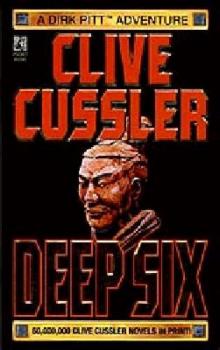 Deep Six
Deep Six Odessa Sea
Odessa Sea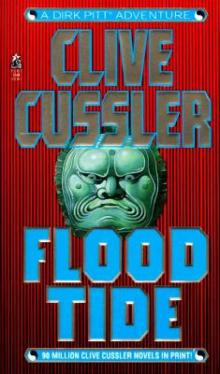 Flood Tide
Flood Tide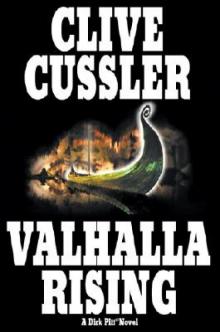 Valhalla Rising
Valhalla Rising Thriller 2
Thriller 2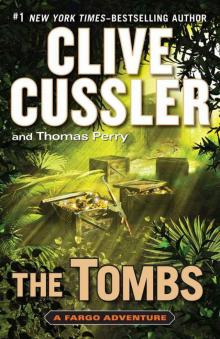 The Tombs
The Tombs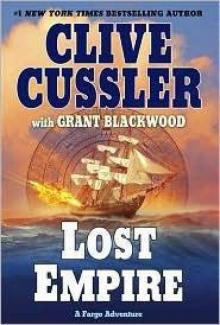 Lost Empire
Lost Empire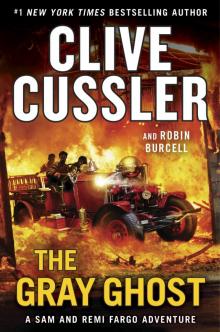 The Gray Ghost
The Gray Ghost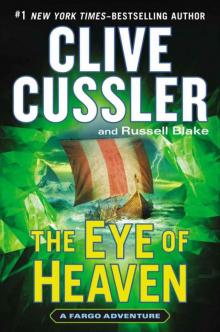 The Eye of Heaven
The Eye of Heaven Polar Shift
Polar Shift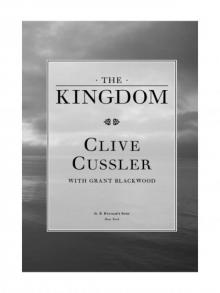 The Kingdom
The Kingdom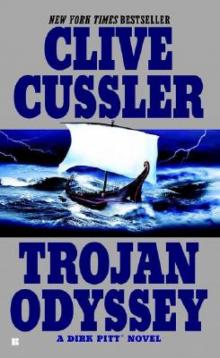 Trojan Odyssey
Trojan Odyssey Shadow Tyrants
Shadow Tyrants Nighthawk
Nighthawk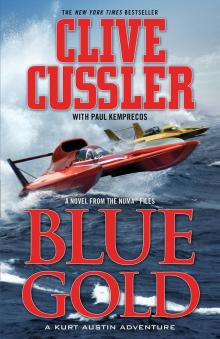 Blue Gold
Blue Gold Serpent
Serpent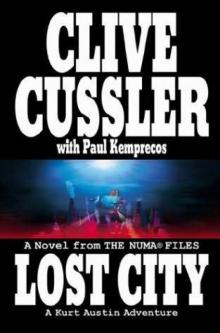 Lost City
Lost City The Gangster
The Gangster White Death
White Death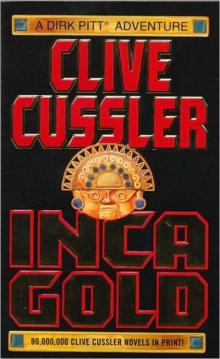 Inca Gold
Inca Gold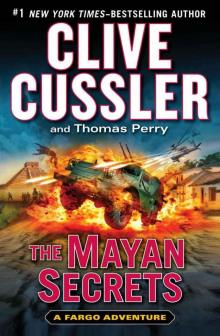 The Mayan Secrets
The Mayan Secrets The Pharaoh's Secret
The Pharaoh's Secret The Emperor's Revenge
The Emperor's Revenge Corsair
Corsair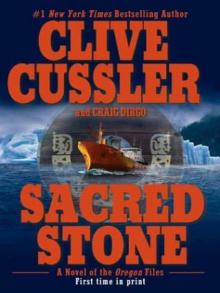 Sacred Stone
Sacred Stone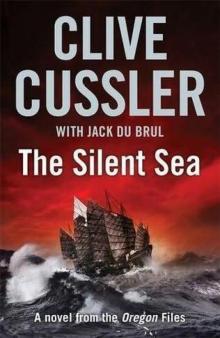 The Silent Sea
The Silent Sea The Rising Sea
The Rising Sea Black Wind
Black Wind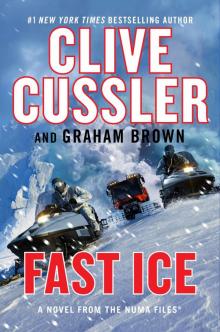 Fast Ice
Fast Ice Ghost Ship
Ghost Ship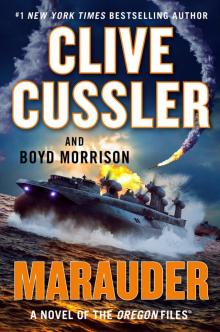 Marauder
Marauder The Thief
The Thief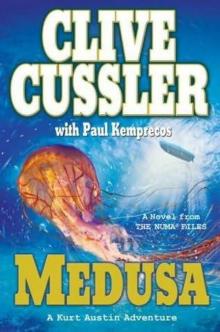 Medusa
Medusa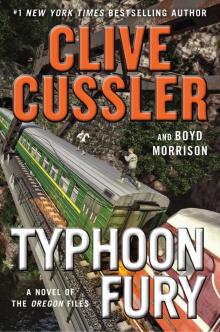 Typhoon Fury
Typhoon Fury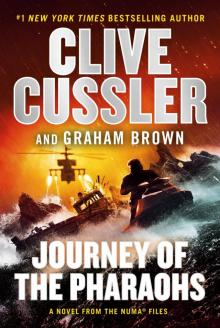 Journey of the Pharaohs
Journey of the Pharaohs The Navigator
The Navigator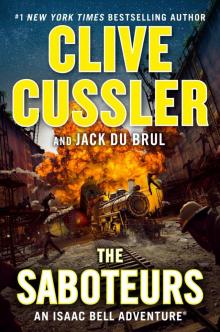 The Saboteurs
The Saboteurs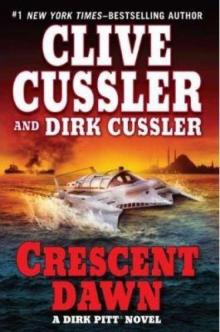 Crescent Dawn
Crescent Dawn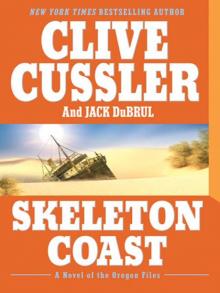 Skeleton Coast
Skeleton Coast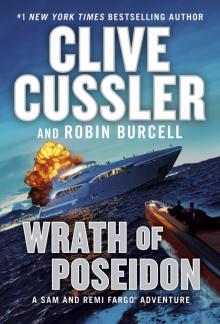 Wrath of Poseidon
Wrath of Poseidon The Mediterranean Caper
The Mediterranean Caper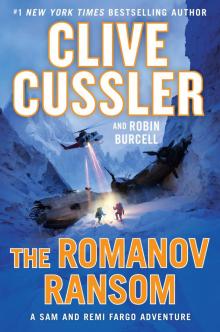 The Romanov Ransom
The Romanov Ransom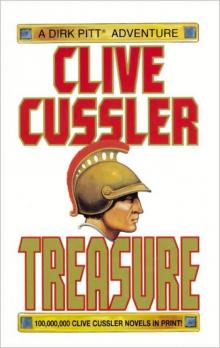 Treasure
Treasure The Race
The Race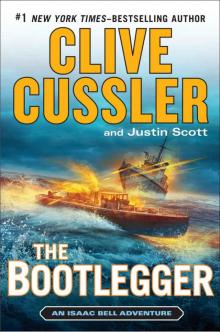 The Bootlegger
The Bootlegger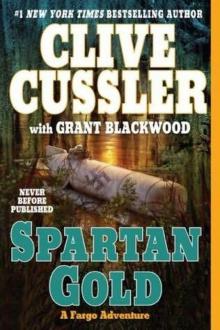 Spartan Gold
Spartan Gold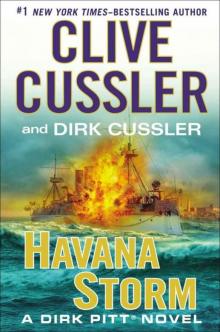 Havana Storm
Havana Storm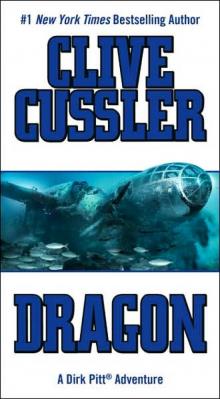 Dragon
Dragon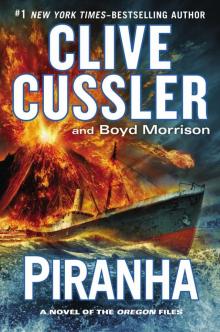 Piranha
Piranha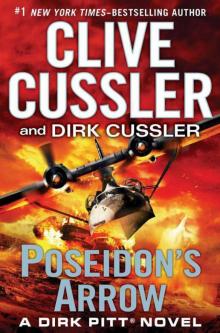 Poseidon's Arrow
Poseidon's Arrow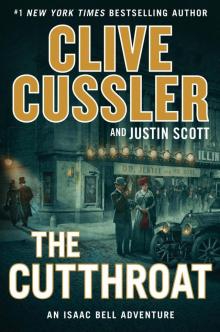 The Cutthroat
The Cutthroat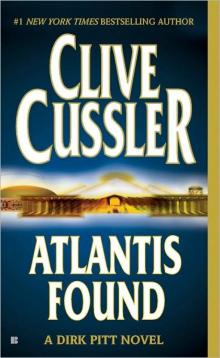 Atlantis Found
Atlantis Found The Jungle
The Jungle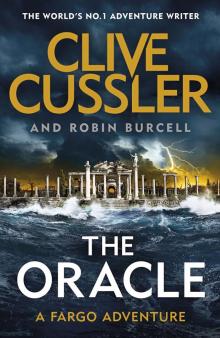 The Oracle
The Oracle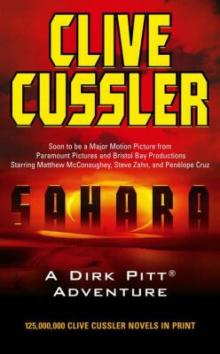 Treasure / Dragon / Sahara: Clive Cussler Gift Set
Treasure / Dragon / Sahara: Clive Cussler Gift Set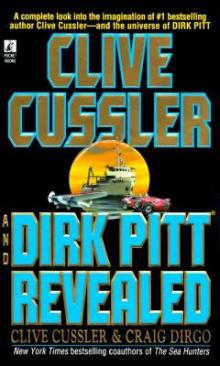 Clive Cussler and Dirk Pitt Revealed
Clive Cussler and Dirk Pitt Revealed The Sea Hunters
The Sea Hunters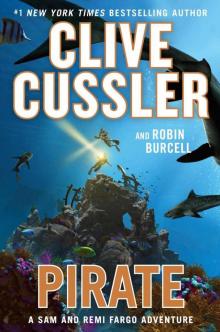 Pirate
Pirate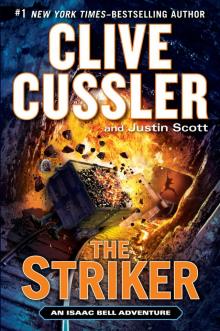 The Striker
The Striker Plague Ship
Plague Ship The Wrecker
The Wrecker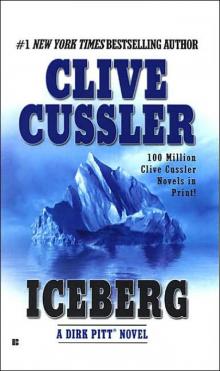 Iceberg
Iceberg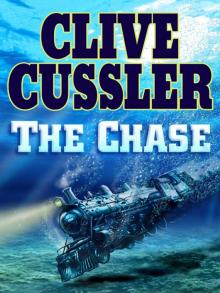 The Chase
The Chase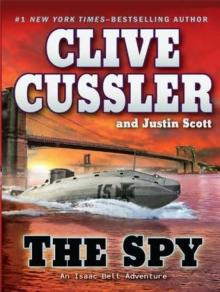 The Spy
The Spy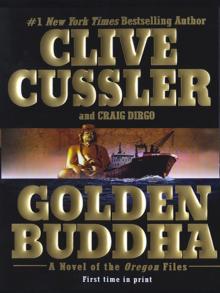 Golden Buddha
Golden Buddha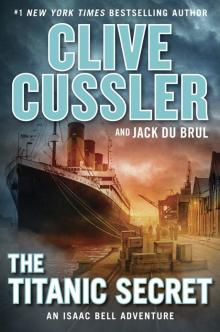 The Titanic Secret
The Titanic Secret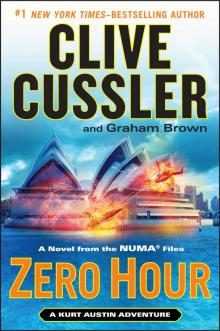 Zero Hour
Zero Hour Fire Ice
Fire Ice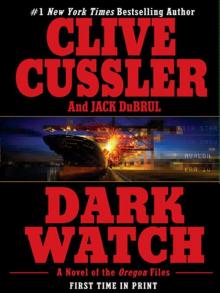 Dark Watch
Dark Watch The Storm
The Storm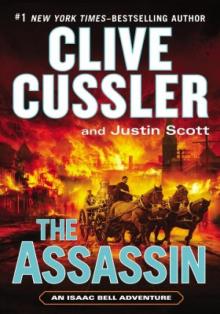 The Assassin
The Assassin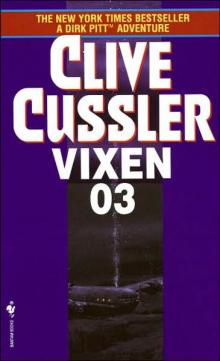 Vixen 03
Vixen 03 Arctic Drift
Arctic Drift Night Probe!
Night Probe! Cyclops
Cyclops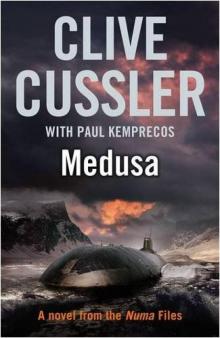 Medusa nf-8
Medusa nf-8 Shock Wave dp-13
Shock Wave dp-13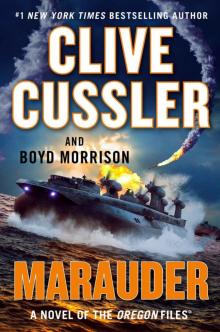 Marauder (The Oregon Files)
Marauder (The Oregon Files)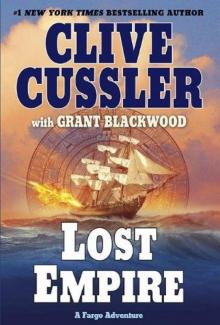 Lost Empire fa-2
Lost Empire fa-2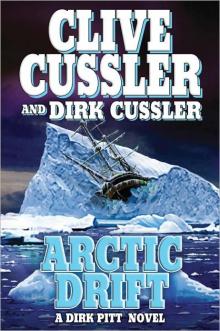 Arctic Drift dp-20
Arctic Drift dp-20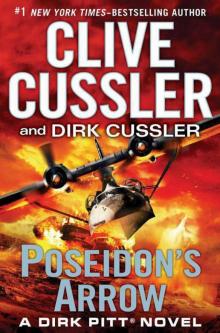 Dirk Pitt 22 - Poseidon's Arrow
Dirk Pitt 22 - Poseidon's Arrow Treasure of Khan dp-19
Treasure of Khan dp-19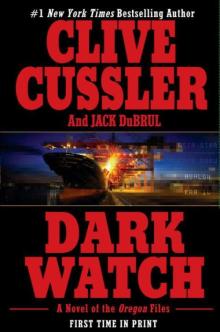 Dark Watch of-3
Dark Watch of-3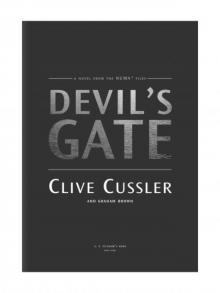 Devil's Gate
Devil's Gate The Sea Hunters II: More True Adventures with Famous Shipwrecks
The Sea Hunters II: More True Adventures with Famous Shipwrecks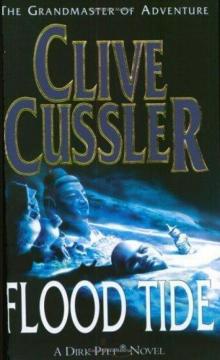 Flood Tide dp-14
Flood Tide dp-14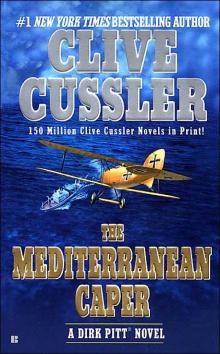 The Mediterranean Caper dp-2
The Mediterranean Caper dp-2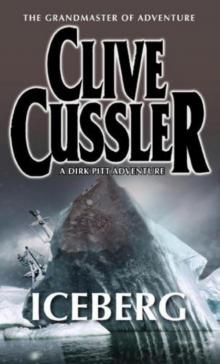 Iceberg dp-3
Iceberg dp-3 Sahara dpa-11
Sahara dpa-11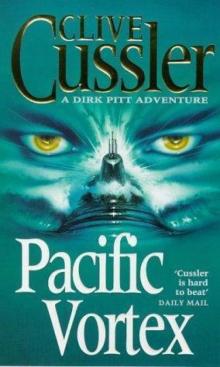 Pacific Vortex! dp-1
Pacific Vortex! dp-1 Deep Six dp-7
Deep Six dp-7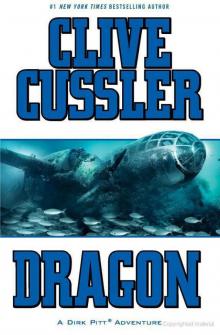 Dragon dp-10
Dragon dp-10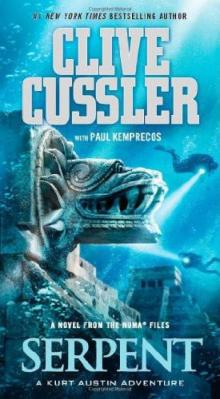 Serpent nf-1
Serpent nf-1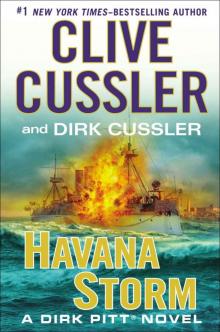 Havana Storm (Dirk Pitt Adventure)
Havana Storm (Dirk Pitt Adventure)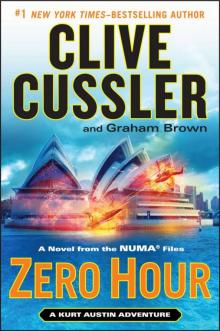 Zero Hour nf-11
Zero Hour nf-11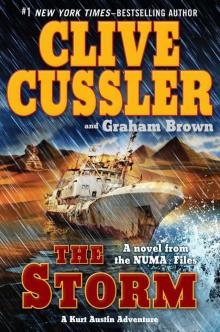 The Storm nf-10
The Storm nf-10 The Thief ib-5
The Thief ib-5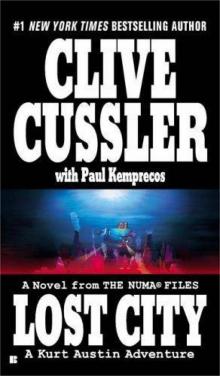 Lost City nf-5
Lost City nf-5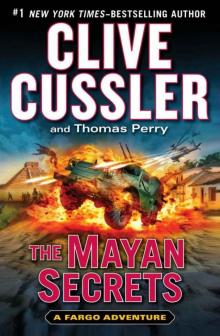 The Mayan Secrets fa-5
The Mayan Secrets fa-5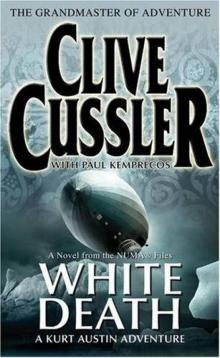 White Death nf-4
White Death nf-4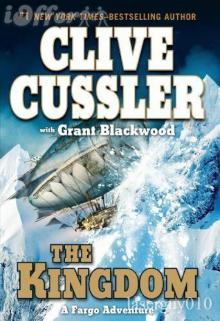 The Kingdom fa-3
The Kingdom fa-3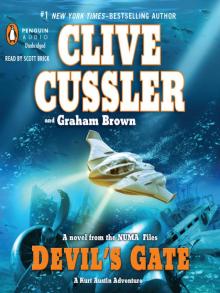 Devil's Gate nf-9
Devil's Gate nf-9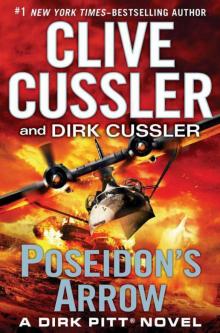 Poseidon's Arrow dp-22
Poseidon's Arrow dp-22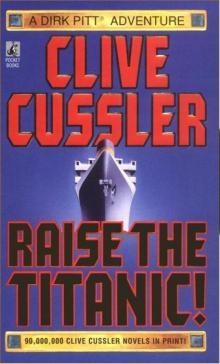 Raise the Titanic dp-4
Raise the Titanic dp-4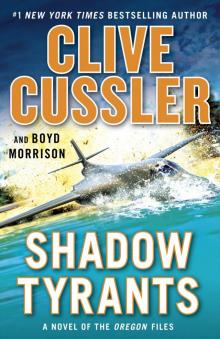 Shadow Tyrants--Clive Cussler
Shadow Tyrants--Clive Cussler Sacred Stone of-2
Sacred Stone of-2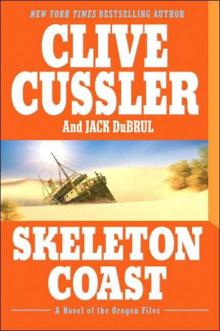 Skeleton Coast tof-4
Skeleton Coast tof-4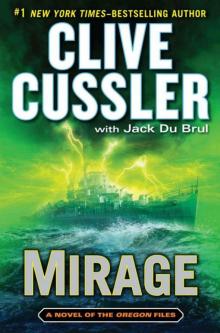 Mirage tof-9
Mirage tof-9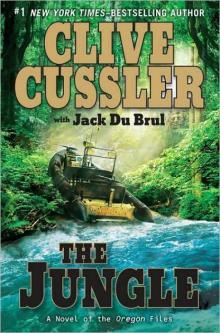 The Jungle of-8
The Jungle of-8 The Emperor's Revenge (The Oregon Files)
The Emperor's Revenge (The Oregon Files)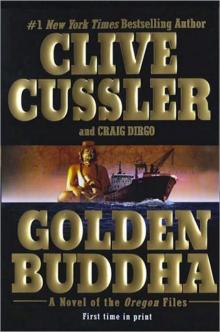 Golden Buddha of-1
Golden Buddha of-1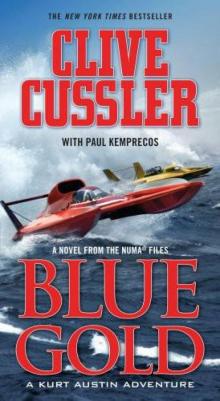 Blue & Gold
Blue & Gold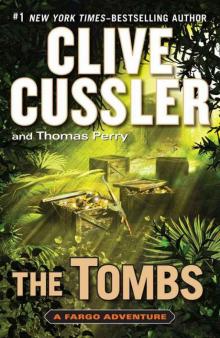 The Tombs fa-4
The Tombs fa-4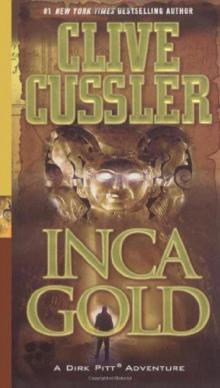 Inca Gold dp-12
Inca Gold dp-12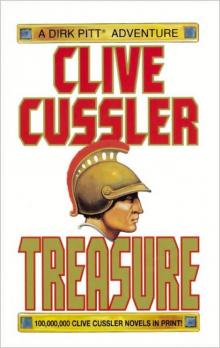 Treasure dp-9
Treasure dp-9 Atlantis Found dp-15
Atlantis Found dp-15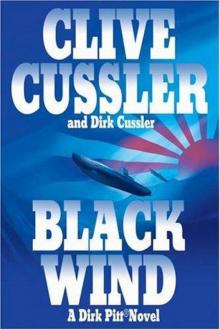 Black Wind dp-18
Black Wind dp-18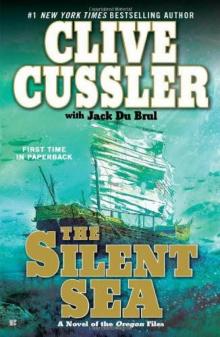 the Silent Sea (2010) tof-7
the Silent Sea (2010) tof-7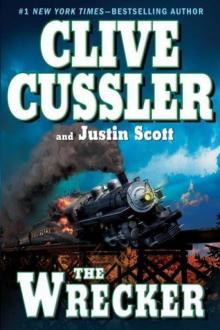 The Wrecker ib-2
The Wrecker ib-2 Fire Ice nf-3
Fire Ice nf-3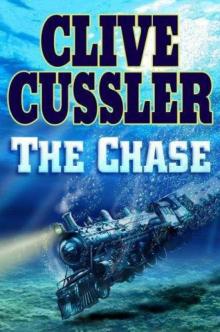 The Chase ib-1
The Chase ib-1 Sahara
Sahara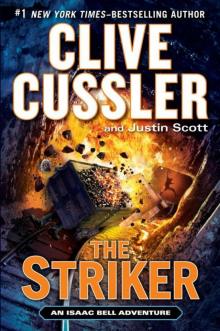 The Striker ib-6
The Striker ib-6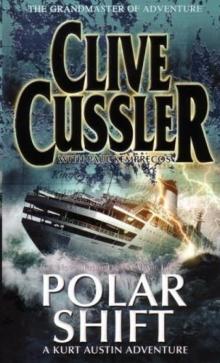 Polar Shift nf-6
Polar Shift nf-6 The Race ib-4
The Race ib-4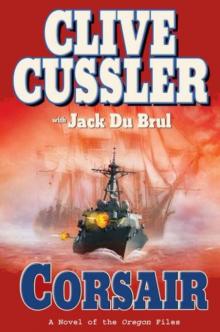 Corsair of-6
Corsair of-6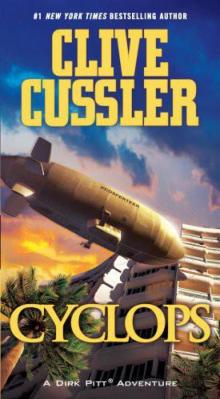 Cyclops dp-8
Cyclops dp-8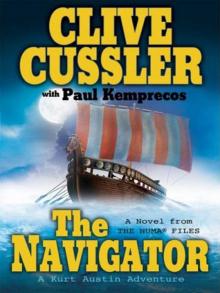 The Navigator nf-7
The Navigator nf-7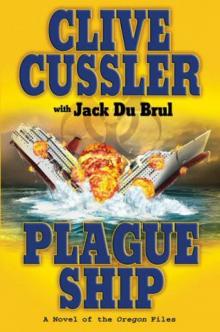 Plague Ship tof-5
Plague Ship tof-5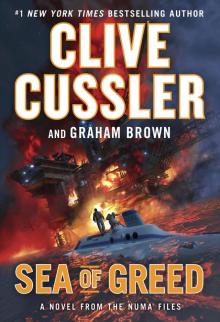 Sea of Greed
Sea of Greed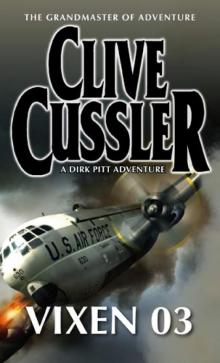 Vixen 03 dp-5
Vixen 03 dp-5 Thriller 2: Stories You Just Can't Put Down
Thriller 2: Stories You Just Can't Put Down